215 scholarly books by Michigan Publishing Services and 11
have author last names that start with C
215 scholarly books by Michigan Publishing Services and 11
215 scholarly books by Michigan Publishing Services
11 have author last names that start with C have author last names that start with C
11 have author last names that start with C have author last names that start with C
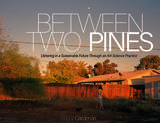
Between Two Pines
Ushering in a Sustainable Future Through an Art-Science Practice
Edgar Cardenas
Michigan Publishing Services, 2019
The stories we tell matter. They shape and frame how we identify, understand, and address challenges. Many of the sustainability stories being told and re-told have been predicated on the idea that techno-scientific solutions will be our salvation. Rarely do they deeply interrogate the cultural and aesthetic factors that contribute to our human-environment relationships. Between Two Pines builds on the growing realization that artists must contribute to and enlarge our current conceptions of sustainability. This book explores how conceptions of the sublime, beauty, and the picturesque influenced the development of our natural aesthetic sensibilities and resolves that sustainability stewardship will require the intersection of ecology, aesthetics, and ethics. Pivoting off the history of landscape photography, Cardenas proposes a sustainability aesthetic, a framework for how the arts can reposition themselves for a sustainability social practice. The book concludes with one hundred little dramas, a body of photographic work that puts to practice his sustainability aesthetic. Between Two Pines places scholarship and art on equal footing, ultimately providing a framework and examples of how art practice can and must be integrated into dialogues and narratives on transitioning into a more sustainable future.
“I am truly thankful that Dr. Edgar Cardenas’s thoughtful research is now available in this beautiful book. I have recommended his work to more people, both in my personal and professional spheres of my life, than I can count, and I’m glad to have this provocative and elegant publication to put into people’s hands. Cardenas shows us how each of us really can make a difference.”
“Between Two Pines anticipates and leads the discussion of scholarship around questions of land and landscape. This work brilliantly and ethically refocuses our vision, from distanced scrutiny to connection and proximity, rooted in daily care-taking and ecological efforts. Thoughtfully imaged, the photographs offer an aesthetic that is based in balanced, enduring reflection, rather than on the grand view. These beautiful images reveal discoveries that bridge the arts, ecology, and sociology, and will serve to reconnect every reader with the world in their backyard and beyond.”
“Drawing from a long photographic tradition of examining the relationship between humans and their environment, Edgar Cardenas has found a voice that is as compassionate as it is poignant. Yet he is not content for his photographs to be mere observations, recording the relationship. Between Two Pines is a call to action – a platform by which we might imagine together, with all of the tools in our tool kit, a sustainable future.”
* * *
“I am truly thankful that Dr. Edgar Cardenas’s thoughtful research is now available in this beautiful book. I have recommended his work to more people, both in my personal and professional spheres of my life, than I can count, and I’m glad to have this provocative and elegant publication to put into people’s hands. Cardenas shows us how each of us really can make a difference.”
Rebecca A. Senf, Chief Curator, Center for Creative Photography, University of Arizona, and author of Making a Photographer
“A truly beautiful and thought provoking treatise on the productive relationship between art and science. In Between Two Pines, Cardenas breaks new interdisciplinary ground through an innovative rethinking of sustainability. This book is a call to action that forces the reader to rethink the antiquated and often paralyzing divisions between the arts and the hard sciences.”
Jason De León, Anthropology and Chicana/o Studies, UCLA, MacArthur Fellow, and author of The Land of Open Graves
“Understanding that broad and complex fields of inquiry must be committed to multiple approaches, Edgar Cardenas makes a cogent and well-grounded case for artistic research in the literatures of sustainability. He also offers his own visual essay—punctuated by philosophical reference and personal reflection—on what it means to live fully engaged with the often unnoticed world at our fingertips. Between Two Pines is an insightful offering on how to open the door to artistic practices in research.”
Joey Orr, Andrew W. Mellon Curator for Research, Spencer Museum of Art, University of Kansas
“Between Two Pines anticipates and leads the discussion of scholarship around questions of land and landscape. This work brilliantly and ethically refocuses our vision, from distanced scrutiny to connection and proximity, rooted in daily care-taking and ecological efforts. Thoughtfully imaged, the photographs offer an aesthetic that is based in balanced, enduring reflection, rather than on the grand view. These beautiful images reveal discoveries that bridge the arts, ecology, and sociology, and will serve to reconnect every reader with the world in their backyard and beyond.”
Rebekah Modrak, School of Art & Design, University of Michigan, and author of Reframing Photography
“Drawing from a long photographic tradition of examining the relationship between humans and their environment, Edgar Cardenas has found a voice that is as compassionate as it is poignant. Yet he is not content for his photographs to be mere observations, recording the relationship. Between Two Pines is a call to action – a platform by which we might imagine together, with all of the tools in our tool kit, a sustainable future.”
J.D. Talasek, Director, Cultural Programs of the National Academy of Sciences
"This book is about many things. It is about storytelling, and it tells stories. It is about aesthetics and awareness, and it envelopes us in its distinctive aesthetic and heightens our awareness. It presents science and art as complementary modes of inquiry, and uses art and science to guide us along a path of inquiry. Words and images combine to carry us along an exploration of what sustainability means as a principle in everyday life. "One hundred little dramas" complete the book by immersing the reader--who has now become an observer and inquirer, collaborating with the author--in a world re-enchanted through compassionate observation, free of glamour or pity."
Edward J. Hackett, Vice Provost for Research, Brandeis University
[more]
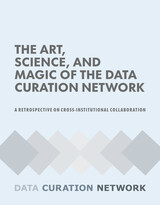
The Art, Science, and Magic of the Data Curation Network
A Retrospective on Cross-Institutional Collaboration
Jake Carlson
Michigan Publishing Services, 2023
The Data Curation Network (DCN) is a membership organization of institutional and non-profit data repositories whose vision is to advance open research by making data more ethical, reusable, and understandable. Although initially conceived of and established through grant funding, the DCN transitioned to a sustainable, member-funded organization in July 2021, and is now composed of almost 50 data curators from 17 institutions.
The Art, Science, and Magic of the Data Curation Network: A Retrospective on Cross Institutional Collaboration captures the results of a project retrospective meeting and describes the necessary components of the DCN’s sustained collaboration in the hopes that the insights will be of use to other collaborative efforts. In particular, the authors describe the successes of the community and challenges of launching a cross-institutional network. Additionally, this publication details the administrative, tool-based, and trust-based structures necessary for establishing this community, the “radical collaboration” that is the cornerstone of the DCN, and potential future collaborations to address shared challenges in libraries and research data management. This in-depth case study provides an overview of the critical work of launching a collaborative network and transitioning to sustainability. This publication will be of special interest to research librarians, data curators, and anyone interested in academic community building.
The Art, Science, and Magic of the Data Curation Network: A Retrospective on Cross Institutional Collaboration captures the results of a project retrospective meeting and describes the necessary components of the DCN’s sustained collaboration in the hopes that the insights will be of use to other collaborative efforts. In particular, the authors describe the successes of the community and challenges of launching a cross-institutional network. Additionally, this publication details the administrative, tool-based, and trust-based structures necessary for establishing this community, the “radical collaboration” that is the cornerstone of the DCN, and potential future collaborations to address shared challenges in libraries and research data management. This in-depth case study provides an overview of the critical work of launching a collaborative network and transitioning to sustainability. This publication will be of special interest to research librarians, data curators, and anyone interested in academic community building.
[more]
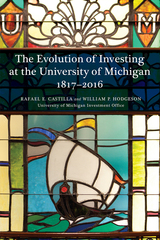
The Evolution of Investing at the University of Michigan
1817–2016
Rafael Castilla
Michigan Publishing Services, 2017
Endowments, foundations, pension funds, private equity, venture capital, hedge funds: these terms are now commonplace as the world of institutional investing has become increasingly complex over the past hundred years. But how did it get this way? The Evolution of Investing at the University of Michigan traces the development of institutional investing through the lens of one of the country’s largest endowments, illustrating how tidal changes in the law, new approaches to governance, portfolio theory and continuing academic advances and studies, as well as incredible innovation in the practice of investment management, have all combined to create the highly sophisticated investing landscape of today.
[more]
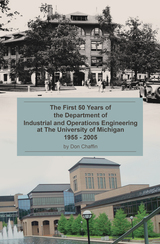
The First 50 Years of the Department of Industrial and Operations Engineering at the University of Michigan
1955–2005
Don Chaffin
Michigan Publishing Services, 2016
Why does someone commit to writing a history about anything? Hopefully, by doing so both the writer and readers will realize that good things don’t simply happen; they result from the creative and hard work of many different people who shared a common vision and goals, often for many years. The Industrial and Operations Engineering Department has been a highly ranked leader in several different aspects of the field over its lifetime. Part of its success may lie in the fact that its faculty members have come from diverse fields, including mathematics, computer science, statistics, physiology, psychology, organizational psychology, mechanical engineering, and economics. In addition, many faculty members worked in or with a variety of industries before joining the department. These people appear to have used their diverse backgrounds in the belief that they could accomplish a larger impact by actively collaborating with others to solve a variety of major societal problems.
[more]
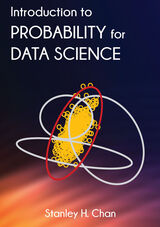
Introduction to Probability for Data Science
Stanley Chan
Michigan Publishing Services, 2021
[from the Preface] This introductory textbook in undergraduate probability emphasizes the inseparability between data (computing) and probability (theory) in our time. It examines the motivation, intuition, and implication of the probabilistic tools used in science and engineering:
- Motivation: In the ocean of mathematical definitions, theorems, and equations, why should we spend our time on this particular topic but not another?
- Intuition: When going through the deviations, is there a geometric interpretation or physics beyond those equations?
- Implication: After we have learned a topic, what new problems can we solve?
[more]
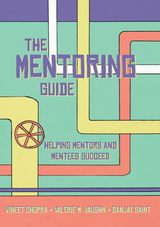
The Mentoring Guide
Helping Mentors and Mentees Succeed
Vineet Chopra
Michigan Publishing Services, 2019
The Mentoring Guide is the go-to resource for mentors and mentees. Written by authors with decades of experience in both roles, it compiles a wide array of stories and data providing concrete, actionable advice to make the most of any mentoring relationship. From getting started as a mentee, to the importance of being a standout mentor, The Mentoring Guide will help avoid pitfalls, address challenges, and develop longlasting, productive, and successful mentoring relationships.
[more]
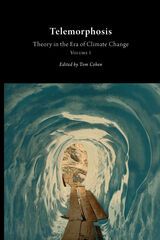
Telemorphosis
Theory in the Era of Climate Change
Tom Cohen
Michigan Publishing Services, 2012
This volume gathers notable critics and philosophers to engage the predominant impasse of an emerging era of climate change and ecocatastrophic acceleration: that is, how to conceptual and critical practices inherited from 20th century master-thinkers—who took no account of these emergences and logics—alter, adapt, mutate, or undergo translation at the current moment. Rather than assume that the humanities and philosophic practices of the past routed in the rethinking of language and power are suspended as irrelevant before mutations of the biosphere itself, Telemorphosis asks how, in fact, the latter have always been imbricated in these cognitive and linguistic practices and remain so, which is also to ask how a certain violence returns, today, to entirely different fields of reference. The writers in the volume ask, implicitly, how the 21st century horizons that exceed any political, economic, or conceptual models alters or redefines a series of key topoi. These range through figures of sexual difference, bioethics, care, species invasion, war, post-carbon thought, ecotechnics, time, and so on. As such, the volume is also a dossier on what metamorphoses await the legacies of “humanistic” thought in adapting to, or rethinking, the other materialities that impinge on contemporary “life as we know it.”
[more]

Stolen Future, Broken Present
The Human Significance of Climate Change
David Collings
Michigan Publishing Services, 2014
This book argues that climate change has a devastating effect on how we think about the future. Once several positive feedback loops, such as the melting of the Arctic icecap or the drying of the Amazon, cross the point of no return, the biosphere is likely to undergo severe and irreversible warming. Nearly everything we do is premised on the assumption that the world we know will endure into the future and provide a sustaining context for our activities. But today the future of a viable biosphere, and thus the purpose of our present activities, is put into question. A disappearing future leads to a broken present, to a strange incoherence in the feel of everyday life. Most discussions of climate change guard us from this realization; this book takes it seriously. Where many argue that the current crisis serves as an opportunity for transformation, it acknowledges that we are virtually out of time to act, even though we must do so. Where many describe a possible transition to a new energy economy, it points out that such an economy, however necessary, would still impose an enormous human footprint on the Earth’s ecosystems. Where many explore how to alter our practices in a gradual process within the existing national and international political systems, it argues that our reliance on them shows that we consider the market, and those systems, to be more real than the biosphere itself. Finally, where many examine the consequences of our actions for our grandchildren, it suggests that climate change has already damaged our own lives. We thus face the unprecedented challenge of salvaging a basis for our lives today – not by turning away from these dark realities but by facing them and, through that process, to discover surprising possibilities for ethical and emotional resilience. That basis, this book argues, may be found in our capacity to assume an infinite responsibility for ecological disaster without condemnation or nostalgia and, like the biblical Job, to respond with awe to the alien voice that speaks from the whirlwind. By owning disaster and accepting our due place within the inhuman forces of the biosphere, we may discover how to live with responsibility and serenity whatever may come. Drawing on contemporary research in climate change, political history, literary studies, philosophical ethics, cultural theory, the history of science, and a/theology, this book brings them together in a comprehensive and bracingly honest assessment of our current dilemma.
[more]
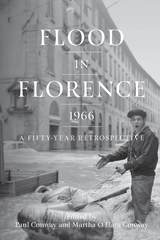
Flood in Florence, 1966
A Fifty-Year Retrospective
Martha O'Hara Conway
Michigan Publishing Services, 2018
On November 4, 1966, the Arno River in Florence, Italy, flooded its banks, breaching the basements and first floors of museums, libraries, and private residences and burying centuries of books, manuscripts, and works of art in muck and muddy water. Flood in Florence, 1966documents a symposium held to mark the 50th anniversary of a natural disaster that served as an impetus for the modern library and museum conservation professions. The proceedings feature illustrated, first-person remembrances of the flood; papers on book conservation, the conservation of works of art, disaster preparedness and response, and the continuing needs for education and training; and a keynote that points toward a future where original artifacts and digital technologies intersect. Providing new insights on a touchstone event by three generations of preservation and conservation professionals, the proceedings deepen our understanding of major advances in conservation practice and shed light on some of the most important lessons from those advances for future generations and the digital age.
[more]

Modern Communications Systems
A First Course
Todor Cooklev
Michigan Publishing Services, 2024
Modern Communications Systems is a senior-level introduction to communications systems, although it can also serve as a reference for graduate students and practicing engineers. It includes treatments of wireless and cabled transmission, cellular systems, and analog and discrete modulation and coding techniques. Examples include Wi-Fi, 4G and 5G cellular systems and DSL. Multicarrier and MIMO communication systems are also covered. All of the mathematics needed is included where it is used rather than in an early introduction, which makes it easier to follow. An extensive number of end-of-chapter problems, along with summaries of concepts, formulas and terms presented in each chapter, are included. Solutions to the end-of-chapter problems are available to instructors teaching from the book.
[more]

Memoirs of a Black Psychiatrist
A Life of Advocacy for Social Change
James L. Curtis
Michigan Publishing Services, 2017
Born during the Great Migration, pursuing an education during World War II, and beginning a career during the Civil Rights movement, Dr. James L. Curtis has surmounted many racial hurdles to rise to the top of academic medicine. Memoirs of a Black Psychiatrist tells Dr. Curtis’s story of working toward his life goal of improving the quality of life and full citizenship of his people, with the help of mentors both black and white. He shows that in only a few decades of his life was it possible for his parents—later, for him and other family members, the whole black community, and eventually the world—to step up a little higher, or be forced back again to the back of the bus.
In his two previous books, Dr. Curtis illustrated the leadership role he played in changing how medicine is practiced for the better. His first book, Blacks, Medical Schools and Society (University of Michigan Press, 1971), was written when he was an associate dean of the Cornell University Medical College. As dean in the beginning years of Affirmative Action in Medicine, Dr. Curtis took action in this movement by desegregating medical school admissions not only at Cornell, but also in all US medical schools. After his retirement, his second book, Affirmative Action in Medicine: Improving Health Care for All (University of Michigan Press, 2003), was published: a twenty-five-year progress report on the social benefit of these programs in the American practice of medicine.
Dr. Curtis retired in 2000 as Clinical Professor of Psychiatry of Columbia University College of Physicians and Surgeons, having been a faculty member for eighteen years. During his tenure at Columbia he was also Director of Psychiatry at Harlem Hospital Center, serving one of the most economically deprived neighborhoods of New York City. Since 2003, he has lived in his hometown of Albion, Michigan, one of the formerly vibrant and prosperous cities devastated by the collapse of the automobile industry. With a small group of others, he is developing new social service programs to benefit Albion.
In his two previous books, Dr. Curtis illustrated the leadership role he played in changing how medicine is practiced for the better. His first book, Blacks, Medical Schools and Society (University of Michigan Press, 1971), was written when he was an associate dean of the Cornell University Medical College. As dean in the beginning years of Affirmative Action in Medicine, Dr. Curtis took action in this movement by desegregating medical school admissions not only at Cornell, but also in all US medical schools. After his retirement, his second book, Affirmative Action in Medicine: Improving Health Care for All (University of Michigan Press, 2003), was published: a twenty-five-year progress report on the social benefit of these programs in the American practice of medicine.
Dr. Curtis retired in 2000 as Clinical Professor of Psychiatry of Columbia University College of Physicians and Surgeons, having been a faculty member for eighteen years. During his tenure at Columbia he was also Director of Psychiatry at Harlem Hospital Center, serving one of the most economically deprived neighborhoods of New York City. Since 2003, he has lived in his hometown of Albion, Michigan, one of the formerly vibrant and prosperous cities devastated by the collapse of the automobile industry. With a small group of others, he is developing new social service programs to benefit Albion.
[more]
READERS
Browse our collection.
PUBLISHERS
See BiblioVault's publisher services.
STUDENT SERVICES
Files for college accessibility offices.
UChicago Accessibility Resources
home | accessibility | search | about | contact us
BiblioVault ® 2001 - 2024
The University of Chicago Press









